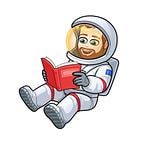The Merging of Espiritismo and Empiricism: Curanderismo on the Borderland
When tasked with determining whether or not Borderlands Curanderos by Jennifer Seman is a microhistory, I first had to look up what exactly a microhistory was. I had a general idea of what it might be, but I wondered what the difference between ‘microhistory’ and ‘local history’ was. My search took me to Duke’s MicroWorlds Lab, a whole project dedicated to microhistories. The Lab asserts that “[m]icrohistory reinfuses the past with its own vibrant energy because finely crafted microhistories capture the drama of everyday life. They let readers understand people as agents of change for the worlds they live in, often in the face of overwhelming difficulties” (MicroWorlds Lab). I then had to look up the definition of local history. According to the Library of Congress, “[l]ocal history is the study of history in a geographically bounded area such as a region, a state, a county, a city, a town, a village, or a neighborhood” (Aiséirithe 2019).
Despite these definitions, I was still unsure of the difference until I came across an article from the University of Victoria. They write that local history and biography “use a similar research methodology but fail to connect specific events with broader social contexts, another important but less obvious characteristic of microhistory” (University of Victoria). This statement cleared up the confusion that I had over the two. Borderlands Curanderos is indeed a microhistory. On further examination, however, it is actually two microhistories. Seman focuses on two prominent curanderos, Santa Teresa Urrea and Don Pedrito Jaramillo, to convey the connections between folk healers and their communities. In Seman’s own words, she states that Urrea and Jaramillo “treated illnesses and sustos in individual bodies and also illnesses in the social body — the ‘immense’ susto that Avila describes as originating in the colonial era but continuing into the nineteenth century…” (2021, 9). It was this emphasis on connecting the individual to the whole or the trees to the forest so-to-speak, that led me to classify it as a microhistory.
The stories of both Urrea and Jaramillo present a crossroads of spiritualism and empiricism, religion and science. Santa Teresa Urrea’s story is a testament to this intersection. When Teresa began to have her visions and drifts into unconscious states in 1889, she “claimed the Virgin Mary told her she had been given the gift of healing — the don — and that she would be a curandera” (Seman 2021, 21–22). Later in her life, she stated that espiritismo “is based on truth” and “that science and religion should march in perfect harmony and union, being that science should be the expression of truth and religion…” (39). Teresa’s healing was based on both the spiritual and her understanding of science.
Similarly, Don Pedrito Jaramillo’s recetas merged the spiritual with the scientific. Jaramillo’s healing of Doña Tomasita provides an excellent example. In 1889, Tomasita, whose fever would not break, was instructed “to bathe in ‘natural’ or cold water three times, once every two hours” (87). Despite the physicians gawking at such a remedy, it worked and her fever broke. We now know that cold water aids in regulating body temperature for fevers… something that the world of physicians had not fully accepted in the late nineteenth century. Beginning in the early twentieth century, doctors and scientists began looking into the benefits of cold water for ailments ranging from hypertension to post-exercise recovery (Allan et al. 2022). This use of cold water is now referred to as ‘cryotherapy.’ Jaramillo was utilizing this practice well before most physicians were.
Although the stories of Santa Teresa Urrea and Don Pedrito Jaramillo are indeed microhistories, their healings and recetas serve as broader explorations of science and spirituality on the borderlands.
References
Aiséirithe, A.J. “U.S. Local History: A Resource Guide.” Library of Congress, September 30, 2019, https://guides.loc.gov/us-local-history.
Allan, Robert et al. “Cold for centuries: a brief history of cryotherapies to improve health, injury and post-exercise recovery.” Eur J Appl Physiol. 122, 5 (February 2022). https://doi.org/10.1007/s00421-022-04915-5.
Seman, Jennifer K. Borderlands Curanderos: The Worlds of Santa Teresa Urrea and Don Pedrito Jaramillo. Austin: University of Texas Press, 2021.
“What is Microhistory.” The MicroWorlds Lab, https://sites.duke.edu/microworldslab/what-is-microhistory/.
“What is Microhistory.” University of Victoria, https://web.uvic.ca/vv/student/vicbrewery/content/microhistory.htm.
